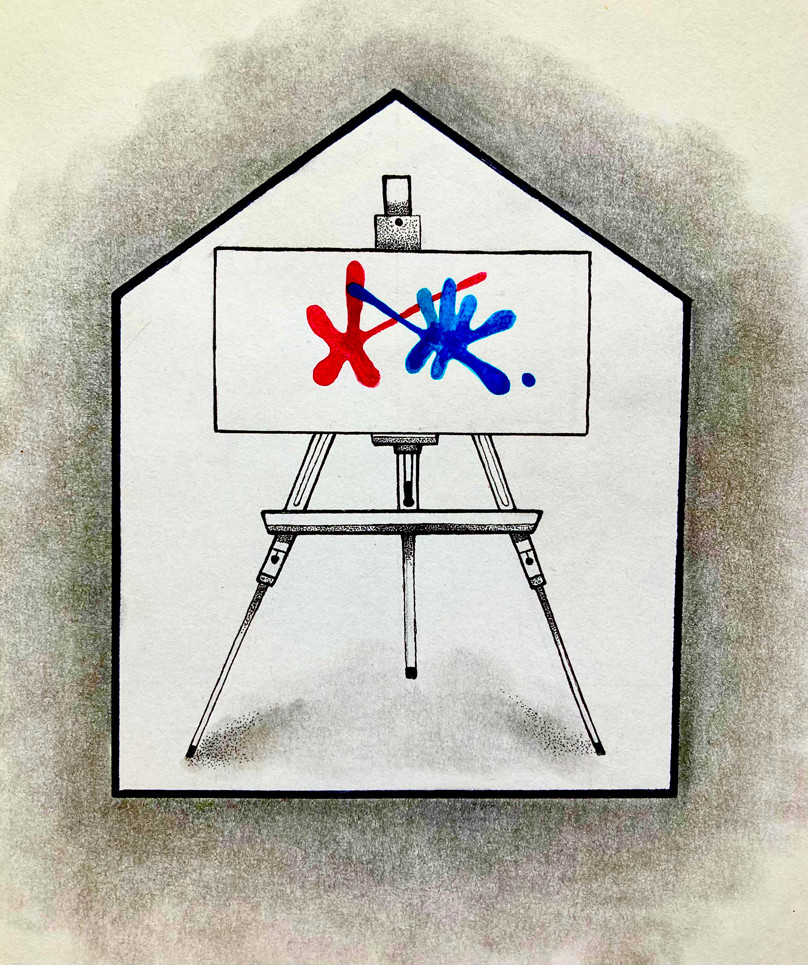Art as a drawing board for change
Foreigner Affairs

Illustration by Gabrielle Funk
In his work Art and Liberation, Herbert Marcuse discusses the more revolutionary aspects of art. Although he suggests there is a divide between a work of art and actual social change, artists can use their practices to address society’s ills, generating initial ideas that have the potential to create social change.
But as commodification becomes increasingly infectious, everything can be sublimated by a corporate structure. Exploring transgressive subject matter can be a way for artists to fight back against power structures. But these very transgressions can be internalized by profiteering organizations and sold back to people, disarming the actual transgressive elements in a work of art itself.
Though the subtext of Bong Joon Ho’s 2019 film Parasite, for example, was explicitly socialist, this message was lost in its own corporate advertising. The film ended in Oscar glory, being applauded by the very same people it was transgressing against.
That being said, I believe smaller cities like Winnipeg can provide refuge for revolutionary creativity. We are far from being any sort of artistic powerhouse in some senses of the term, and because of this, I believe we have the potential to break away from the unifying stasis of big business.
I believe the immigrant population in particular should take advantage of this. Political change begins with the expression of one’s discontent, and greater opportunities should be given to immigrant communities to express themselves in such a manner.
This can start with provincial government-funded programs providing public spaces in immigrant communities for people to express themselves, and go as far as providing grants to members of immigrant communities. Either way, the primary goal is the free expression of creative ideas, which will have the potential to translate to a more material change for the better.
Of course, the question remains: how can art be promoted in immigrant communities? One great way is for the provincial government to provide grants specifically reserved for artists from communities with dense immigrant populations (such as the Maples). This will both promote artistic endeavors in these communities and bring in a more diverse range of voices to the local established art scenes in general.
It will, most importantly, give immigrant communities a platform from which to express their specific experiences and struggles. It is also very important to encourage children in immigrant-dense schools to partake in more artistic practices. More money should be directed towards these endeavors in order to encourage art as a whole.
More artistic expression on the part of Winnipeg’s immigrant community could be the basis for a new change in legislative policy or a broader social movement. It all starts with funding that is conducive to encouraging these ideas without opportunistically exploiting them for profit.
Vinay Sharma is a third-year philosophy student. His main interests are political philosophy and the philosophy of language.
Published in Volume 75, Number 24 of The Uniter (May 1, 2021)







